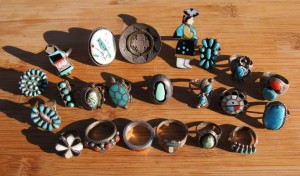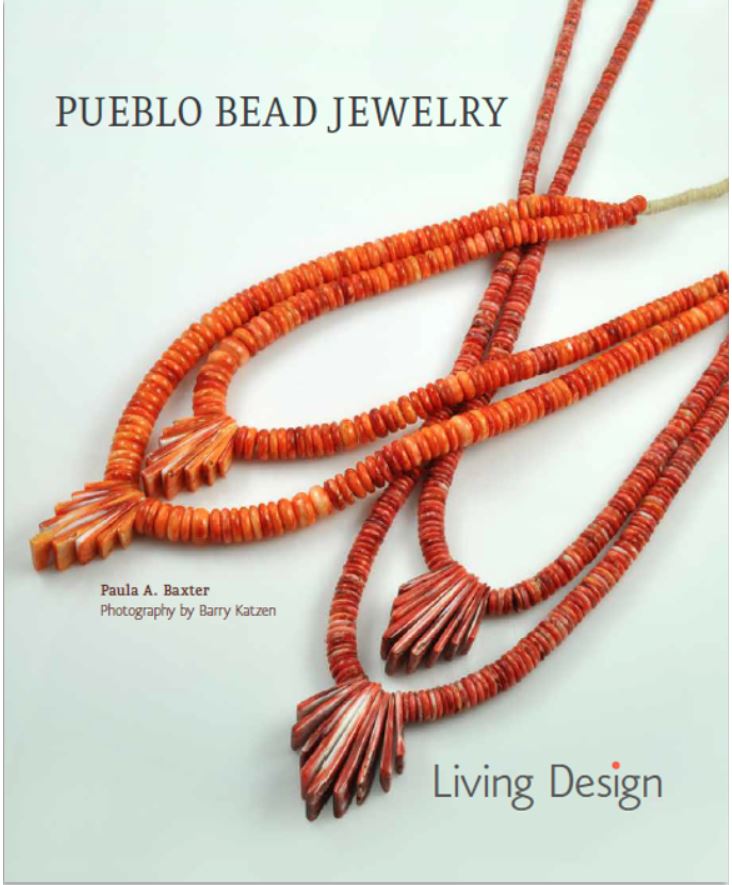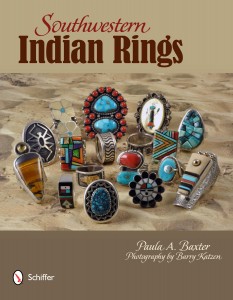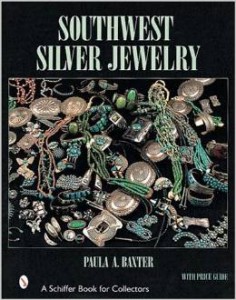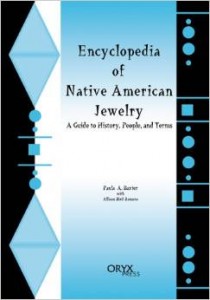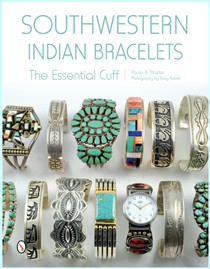Do you begin to sweat when you walk into a store, gallery, or exhibit space that offers Indian arts for sale — especially arts that you collect? I’ve had this particular affliction since 1986. It does NOT get better over time. There are two kinds of places that affect me most: 1) new emporiums I’ve never visited before, and 2) the shops of the Heard Museum and Museum of Northern Arizona.
At times, depending on the weather, I have to carry a small terry cloth with me to wipe the sweat away from my face and keep it from landing on the desirable objéts I am looking over. Buying a four-pack of terry baby wipe cloths is a good investment. Other people will sidle up to me and whisper that they have the same condition. One woman told me she got so excited during a Crownpoint Navajo Rug Auction, she had to run outside the school building to cool down. Straight into below freezing weather. Years ago, we attended an auction at Crownpoint in November. We bid successfully on three small weavings. We lurched all the way to Gallup that night on icy, snowy roads — and the entire time we forgot to turn on the heater!
This prime example from a museum in the Northeast shows us a fine Navajo-made squash blossom necklace using American currency (silver dollars) for ornamentation. The earlier generations of Native smiths used U.S. and Mexican coins for their metal until this practice was firmly banned by the federal govenment in mid-century. Beautiful necklaces were crafted between the 1920s and 1950s and became enjoyable souvenirs to be brought back home and worn for their amusement value. Yet these pieces are also fine examples of Native exploration with design. Humor has to be an underlying impulse: Indians would grow to understand that such currency was essential for living in the modern world.
At this point, a collector finds that he or she is ready to entertain the idea of people — the object’s creators. It can be embarrassing to admit that one collects for a period of time without thinking about the creators, but many collectors admit that this is precisely what they have done. Many times, collectors begin to forge bonds with their suppliers. These dealers, vendors, and shop owners often suggest artists to meet, and then collectors start on the show circuit.
I still remember a crucial moment, about four years into my collecting, when a Navajo gallery dealer quietly advised me to take a good look at the people who made objects I wanted to purchase. I followed through at the Gallup Intertribal Ceremonial, and I learned that those objects I loved so much had people behind them.
One object isn’t enough, oh no! The new collector is ready to embark willy-nilly on a hunt for objects like the ones in his/her possession. Frankly, new collectors can’t get enough exposure to these objects. If you don’t live in the Southwest, you comb through local shops, dealers, and shows. It only took one trip for me to realize that big successful enterprises like the Brimfield (MA) antique shows are NOT the place to find one’s objects of desire. A savvy dealer has been there the day before and taken anything of note. New collectors need to understand these realities before expending too much manic energy in fruitless hunts.
Sometimes hunts prove beneficial after the fact. We started visiting trading posts on the Navajo reservation in the late 1980s and early 1990s. Some had already stopped being genuine sources for Indian arts. Yet we discovered an affordable and fantastic rug at the Crystal Trading Post and a saddle blanket at Shonto, and learned about the historical importance of trading posts, even though their day had passed by the mid-1970s. New posts, operating like galleries are less plentiful, but when you hunt down one like Twin Rocks Trading in Bluff, Utah, it’s like hitting a bulls-eye!
Despite the presence of the Yavapai-Prescott Indian Reservation, the small town of Prescott, Arizona, possesses a rural Western aspect, making the ambience more Cowboy than Indian. That said, Prescott holds attraction for the lover of Indian Country. Whether that translates into enjoying Bucky’s or Yavapai Casino or wandering the many small shops that ring Prescott’s town green, there are things to be seen and purchased.
Ogg’s Hogan, on Cortez Street, is filled with vintage collectibles that glitter as appealingly as those goods featured in Cowboys and Indians magazine. I spotted tote bags fashioned from Navajo textiles alongside shiny spurs and rodeo gear. The owner used to work for the Fred Harvey Company, and ran Hopi House on the Grand Canyon’s South Rim. Other stores in town feature Native-made goods (along with imitation Indian-made items), although the ratio is smaller in comparison to merchandise in the Southwestern Style intended for Western culture buffs.
We still remember that tourist from Europe we ran into in Scottsdale a year ago who wanted to know where “all the Indians” lived and worked! Someone we’ve known for a while, who resides in Prescott, is a Native equally at home in his traditional society and in the wider world of art, antiques, and collectibles. We’re referring to talented Navajo silversmith and jeweler Ernie Lister, who runs a small antiques shop off the lobby of the Montezuma Hotel, a historic old-time lodging place. His Hotel Trading Company features tantalizing Native and non-Native vintage works, from concha belts to pottery to estate jewelry and adornment.
While he minds the store, Ernie also runs his work bench, from which spot he fashions delectable silver and stone creations. He’s a top-of-the-line artist, able to switch back and forth from old style to avant-garde forms, whose works are sought by collectors at home and abroad (he has a following in Japan). One of his pieces appears in our forthcoming book Southwestern Indian Rings (Schiffer, November 2011). Lister is a refreshing example of a Native art expert in Indian country, and a change from the non-Native dealers who dominate the vintage Indian arts market.
This rich blue stone is so much more than the official gemstone of New Mexico and the designated stone for those born in the month of December. Turquoise has been part of the American Southwest and its peoples for more than 2000 years. Those who prize turquoise as a collectible, and love it in their Native-made jewelry, realize soon that they need to know more about this stone than the fact that it’s composed from the hydrous phosphate of copper and aluminum.
Not all turquoise is usable: it needs to be sturdy enough to take cutting and polishing. Mines of origin, color, and matrix determine value. Yet natural turquoise, a large part of what determines price for a piece of jewelry with such material, means that this stone hasn’t been treated. Unfortunately, most turquoise today requires some sort of treatment.
At this point, the collector requires some education. Dealers and suppliers are a source for information, but self-education is essential, too. Here the IACA offers some help, with their useful pamphlets. They, too, in turn look to experts, such as those who run the Turquoise Museum in Albuquerque. Located virtually a hop, skip and jump away from the Old Town Plaza, every would-be Indian arts enthusiast should make a pilgrimage there.
By the way, IACA recently announced the award-winning artists from their Spring show. See Liz Rose’s article for details.
One of the greatest treasures of the Tucson region lies off the highway at 4410 S. Mission Road. We first heard about Turquoise Skies through an older travel guide. Being up-to-date, we did an online search and found a cheerful little website for a truly wonderful place.
Turquoise Skies is run by two local men, Robert Seymour and Marshall Kidder, who have an eye for the quality in Native-made arts. Turquoise Skies is a small shop, but inside are some of the most amazing Tohono O’odham baskets we’ve ever seen. The owners have been in business for a long time and know many artists well. This knowledge has brewed an intriguing selection of jewelry, pottery, weavings, basketry, stone carving, and fine arts. On the day we stopped, they disclosed how Tucson’s venues for Indian arts have dwindled from more than forty to just a handful. This is one of the best, with very good prices. Visit them online at http://turquoiseskies.com
Hi Paula,
We inherited a whole bunch of Native American jewelry (several hundred pieces in total) from my parents who sold some at a shop in the seventies. I’ve attached a couple of representative pics. About a third to a quarter of them have hallmarks. We would like to sell some of it, but we’re not really sure what we have. Can you help us find someone in the St. Louis area who can give us an idea as to value?
Thanks for your help,
Richard Newton
Southwestern Souvenirs responds:
Dear Richard:
I found some individuals for you who will be able to lead you to the right appraiser. From ATADA (Antique Tribal Arts Dealers Association), I located Joseph Zeller, who is in East Dundee, Illinois, the closest location I could find to St. Louis. He is part of River Trading Post, which operates three stores: in Illinois, Santa Fe, NM, and Scottsdale, AZ. I know this outfit and they are very reputable; he can help you locate an appraiser, or someone at River may be trained to do this. River Trading Post, tel (847) 426-6901 and e-mail: trader@rivertradingpost.com
Closer to you geographically are the following members of the IACA (Indian Arts and Crafts Association), and I have heard of the Native American Trading Company. They, too, will acquaint you with someone who can help.
Native American Trading Co.
Michael O’Cheltree
115 N Main Street
Hannibal, MO 63401-3536
573.248.3451, Fax: 573. 221.4054
Email: natamtrd@sbcglobal.net
Website: www.nativeamericantrading.com
Silver City Trading Post
Richard Sellers, Barb Schnarr
724 S. Main St
St. Charles, MO 63301
636.255.8885, Fax: 636.255.8885
Email: silver_city@sbcglobal.net
The pieces I saw in your photo were quite nice; they look like they range from the 1940s to early 1980s. All of the individuals above will be familiar with this jewelry. The vintage jewelry market has seen a rise in interest lately, but be aware that the pre-1940s pieces in good condition will fetch higher prices. For example, your 1970s items will resell for about $120-$200 roughly, depending on materials and condition. Members of ATADA and IACA are bound by guarantees of ethical practices, which is important when dealing with American Indian jewelry — which has its own black market of fakes and misrepresentation. Good luck! I rather fancied some of those Zuni inlay rings, myself!
Paula
Tom Bahti was an Indian trader in the mid-twentieth century who also wrote about his vocation. His son, Mark, has continued the tradition. He ran his gallery for many years solely in Tucson, before expanding to a second shop in Santa Fe.
We visited the Santa Fe store briefly during Indian Market this year and found it packed to the rafters. We couldn’t get any closer, but this shop carries a large selection of Indian jewelry. The selection is smaller at the Tucson gallery, but offers selections from a solid range of contemporary talent, including Navajo, Zuni, and Santo Domingo artists. There was a small case of superb vintage jewelry pieces. An equally small but good assortment of fetish carvings, katsinas, baskets and pottery are available.
When we were at the Tucson store, some remodeling was happening that will culminate in a gallery that offers fine arts. We saw an installation in progress of abstract-looking paintings by a Native artist.
Shop at Bahti Indian Arts if you want to be assured of good quality arts with impeccable pedigrees.
